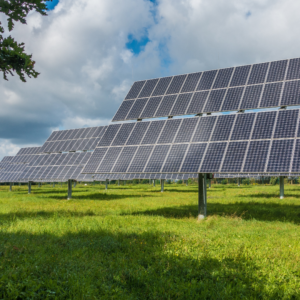For the past few months, we have seen the impact of an increased penetration of Solar into the network. In all regions the most obvious impact has been the very low and sometimes negative spot prices, but the more concerning impact is on grid stability.
To control the impact that non-synchronous generation such as Solar and Wind is having on the network, South Australia (SA) has introduced new rules for inverter standards and a requirement for an agent to control the output from homes and businesses.
Inverters are the boxes connecting the solar panels on someone’s roof to the distribution network. The new inverter standards allow more physical control of a household or businesses system. Rules associated with the connection of Rooftop Photovoltaic (PV) to the distribution grid, have been updated to require households to nominate an “agent” to undertake Solar switching. Solar switching is switching off your solar, if requested by Australian Energy Market Operator (AEMO).
The South Australian government mandated the “Smarter Homes” changes to take effect from 28th September 2020, for all embedded generation. Amendments to the regulation are planned to revolutionise the way distributed energy resources interact with the grid.
The risk of Zero demand occurring across the NEM will become a real scenario in the very near future. “Zero demand” is when all of the electricity consumption in a region is produced by onsite generation, such as roof top PV and limited requirements for conventional generators to supply electricity to that region. Regulations need to be updated through the fast track process to keep up with the rapid evolution of the NEM. Normally the regulator process of rule changes can take up to 2 years.
AEMO’s modelling shows zero demand could occur in SA, prior to the new interconnector connecting into NSW being built. This results in SA’s scheduled generation having to limit their output to match the flow across interconnectors into adjacent regions.
The new standards require installed equipment to have low voltage ride-through capabilities. This will prevent systems collapsing when frequency swings around on the network and within the embedded network. These changes will require generation to withstand fluctuation in frequency and remain online if within the set limits or automatically disconnect the unit causing the fault from the grid.
Other requirements are that the connections must include a smart meter. This will enable the “agent” to control the output from the system. In line with this is the requirement to allow the “agent” to remotely disconnect and reconnect the embedded generators. To allow the smart meter to function correctly the inverter must be connected via the internet to allow communication between the “agent” and the customer.
This standard will first be rolled out across SA, then across the South West Interconnected System (SWIS) in Western Australia, followed by the remainder of the NEM. Embedded systems operating prior to 10 August 2020 or installed prior to 28 September 2020 will be exempt.
In the recently released Integrated System Plan (ISP) and Electricity Statement of Opportunities (ESOO), AEMO have outlined the requirement to build a more robust system to improve system strength. This is just one of the steps outlined in AEMOs roadmap which includes the introduction of new technologies, revised standards and revised control and operation processes to ensure the grid operated safely and securely.
As grid stability is the main concern for AEMO compared to price drivers, the new inverter standard is all about ensuring ride-through occurs effectively. Due to the very high penetration of Solar generation into the SA market, AEMO studies note that up to 40% of rooftop PV could disconnect instantaneously, if ride-through does not occur. This equates to 500MW which is more than the largest scheduled unit in the state.
The result of this volume of generation disconnecting could result in another system black out as experienced in SA four years ago, which was caused by storms that took out transmission elements including numerous transmission towers.
The consequence of the powerlines falling caused the frequency to significantly change, because of the frequency changes, generators tripped offline as they did not have ride-through protection.

